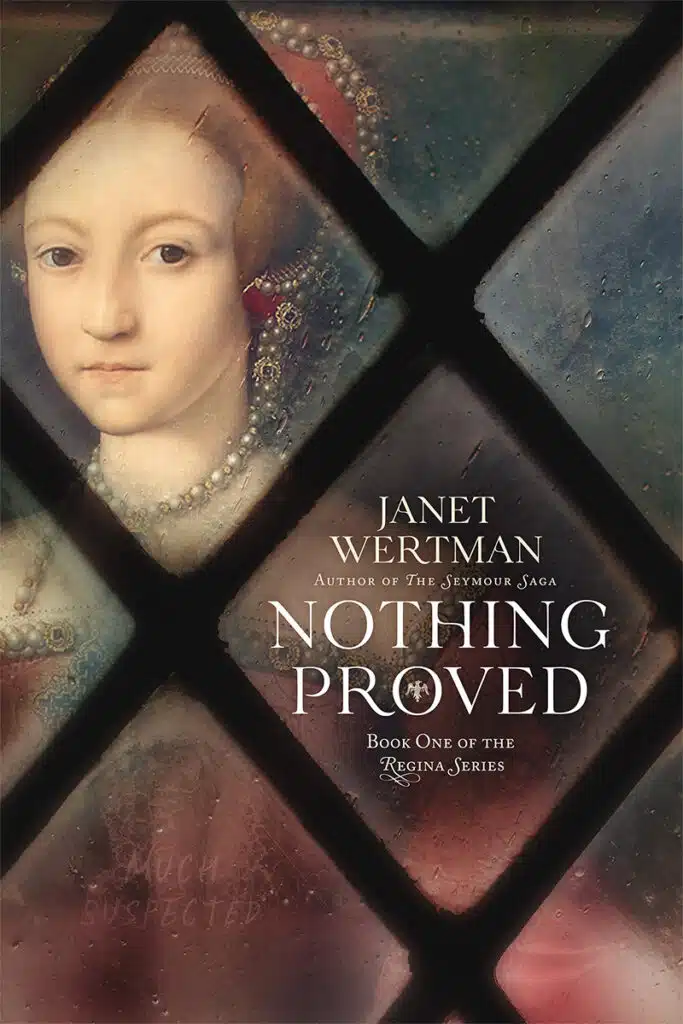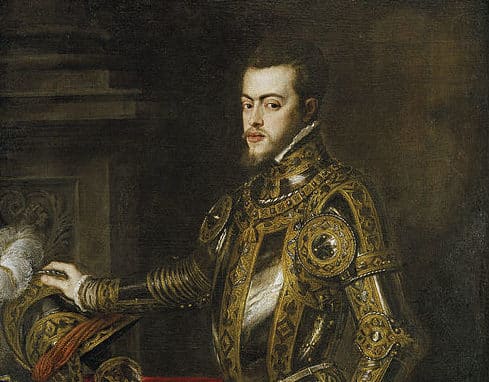
Part of me wants to say “goodbye and good riddance” and leave it at that: Philip of Spain was not a good husband to Mary I – he truly broke her heart. But the situation deserves an explanation.
Mary had been starved for love since she was fourteen years old, since her father abandoned her mother and kept Mary and Catherine apart to try to force Catherine into conceding that her marriage was invalid. There were years in which Henry would not speak to Mary, and even after they reconciled Henry treated Mary poorly. One of the meanest things he did was to refuse to consider a marriage for her out of fear that her husband would try to claim the English throne (as Mary herself put it, “while my father lives, I shall only be the lady Mary and the unhappiest woman in Christendom”). And things didn’t improve on Henry’s death: her brother tried to stop her from hearing Mass, and then tried to settle the succession on Lady Jane Grey. When Mary vanquished her enemies, she credited the Lord’s intervention and thought herself blessed.
It was in this spirit that the thirty-seven year old queen allowed herself to fall in love with Titian’s portrait of the twenty-four year old Philip of Spain. Her advisors wanted her to wed an Englishman – but she had no interest in frontrunners Edward Courtenay or Reginald Pole (who had not yet taken priestly vows of celibacy) and she implicitly trusted the son of the man, Charles V, who had been her champion all her life. And while the Council tried to protect her and England by inserting special protections into the marriage treaty, she overruled them in practice. Specifically, she insisted that Philip’s orders be as respected as hers, and she supported him in Spain’s renewed war against France. As a result of those choices, she lost Calais – and she almost lost her country as well when rebels decided they had enough.
The worst part was that Philip made it pretty clear that he was nowhere near as besotted with Mary as she was with him (as one of his aides put it, “the marriage was concluded for no fleshly consideration, but in order to remedy the disorders of this kingdom and to preserve the Low Countries.”). After Mary’s first phantom pregnancy, he left once it became apparent that she was not pregnant, throwing her into a deep depression and terror that this was part of “God’s punishment” for having “tolerated heretics in her realm.” Her attempts to remedy this situation resulted in almost 300 executions, mostly by burning. Philip did return to try to impregnate her a second time, during which visit it is said he tried to worm his way into Elizabeth’s affections as his “plan B’ if Mary were to die. Which she did not long after he left this second and last time….
Goodbye and good riddance.
***
If you like my posts, you’ll love my books! Nothing Proved is my newest, the story of Elizabeth Tudor’s journey from bastard to queen. Get it now through your favorite platform – Amazon, Barnes & Noble, Kobo, Apple, or your own independent bookstore

(PS Already read it? Did you love it? Then please review it – even just a stars rating! It makes a huge difference in helping new readers find them and would mean the world to me!)e!)

I have always disliked Phillip. He treated Mary badly,also think he had a hand in her killing off Lady Jane Grey and Mary murdering so many non Catholics.She was a sad figure and much to be pitied until she went on her rampages.She was known as Bloody Mary when I was at school in England and they had laws that no Catholic could have high Office or marry one without renouncing that religion,Prince Michael was a case in point. I don’t know if that has changed now though.
I do believe princess kate was raised catholic and had to renounce it and become Anglican to marry William
Actually, that was quite a widespread theory but I checked and the answer is no. Kate was raised Anglican (though not in a very reigious household). More important, the current rule simply limits the reigning monarch from being anything other than Church of England (since they are head of that church…) – though for centuries there was a bigger issue!